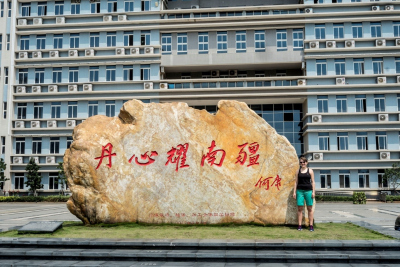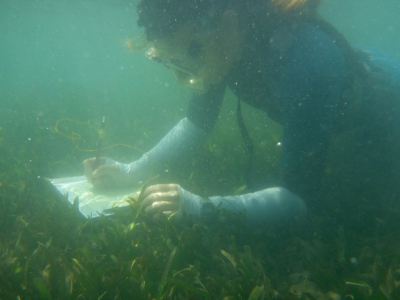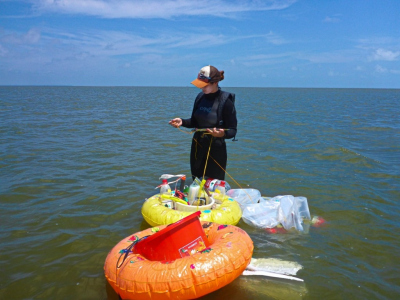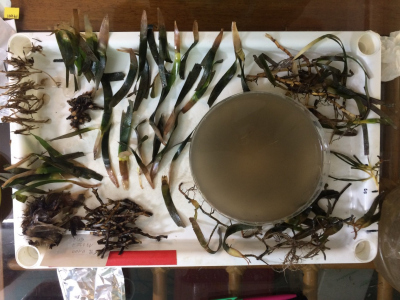- Graduate School GLOMAR
- PhD student reports
- Field Campaigns
- Esther Thomsen
Esther Thomsen
Report of GLOMAR PhD student Esther Thomsen about her field campaign in Hainan, China, from September to October 2017
From September 12th to October 16th 2017 I conducted a field campaign on Hainan Island. The aim was to collect samples for my PhD project. During this fieldtrip I was supported by Lena Wawrschin a Master Student from the University of Bremen. Local support for came from the University of Hainan and the Hainan Academy of Ocean and Fisheries Sciences.
I work in the ECOLOC - Project (http://ecoloc.zmt-bremen.com/). The interdisciplinary Sino-German project addresses the effect of land-derived anthropogenic substances on the coastal ecosystems.
My subproject investigates the effect of aquaculture effluents on seagrasses. In Hainan a lot of aquaculture ponds drain their wastewaters directly into the back reef area, affecting the seagrasses. From Chinese side our sampling was supported by Dr. Darou Wang and Chen Shiquan of the Hainan Academy of Ocean and Fisheries Sciences (HAOFS) and students of the working group of Dr. Hailong Zhou from the Hainan University (HU).
During the sampling we visited three back reef areas with different amount of aquaculture ponds at the coast. Along coastal transects we assessed seagrass health. Additionally we fertilized a seagrass meadow over several weeks to assess the physiological responses of different seagrass species to nutrient enrichment. This experiment was coupled with nitrogen uptake experiments. Our sampling is generally conducted by walking and snorkeling in the back reef area. We tow the sampling materials in buckets placed in simple floating devices like swimming rings for children. Therefore the sampling is very restricted to low tide and good weather conditions.
Due to the excellent support from the Chinese Students Kailin Mao and Lin Fang we also got a lot of water samples from aquaculture ponds including crucial information about breeding techniques of fish and shrimps. The farmers were very helpful and interested in our work. The samples were sent to Germany for analysis in our laboratories at ZMT in Bremen.
I consider the research stay as very successful. I could complete the dataset I need for my PhD-Thesis. Meeting local seagrass specialists strengthened my scientific network. It was very interesting to learn about seagrass distributions apart from my own sampling stations. The hospitality and support we got from our Chinese partners was overwhelming. I thank the Federal Ministry of Education and Research (BMBF) for funding the project and my research stay.






